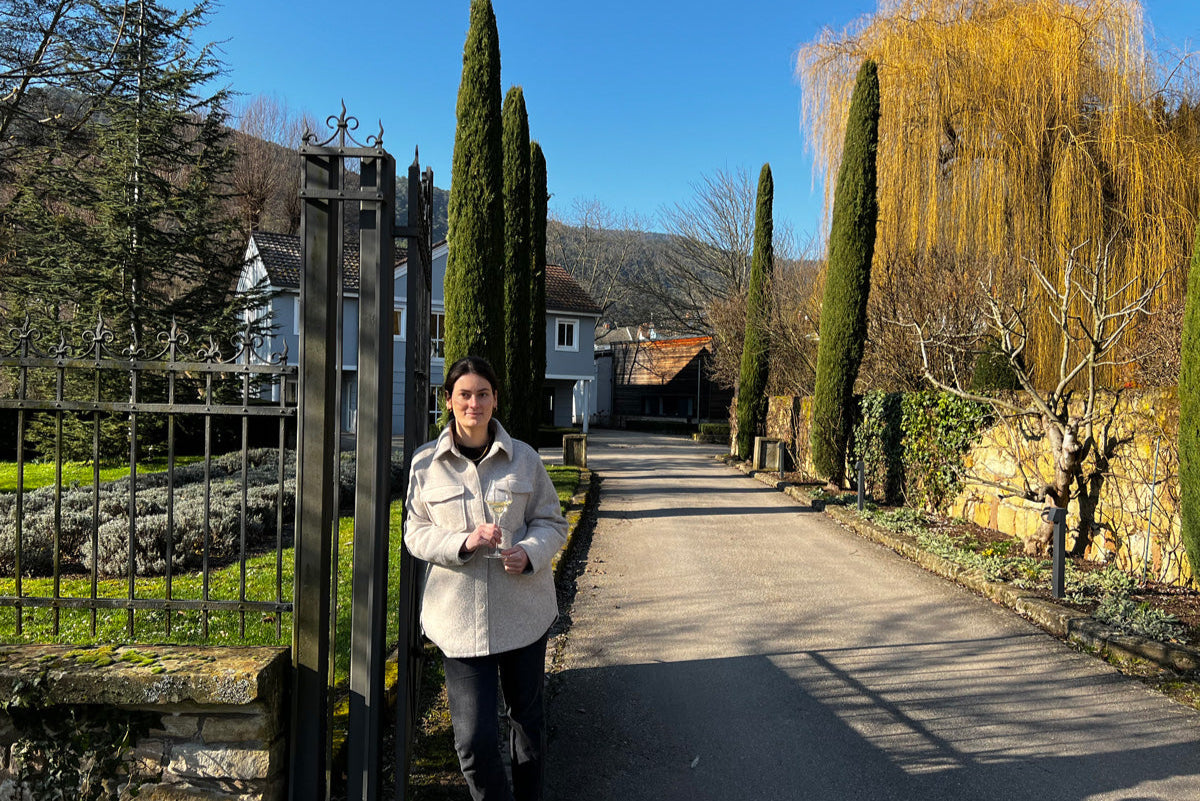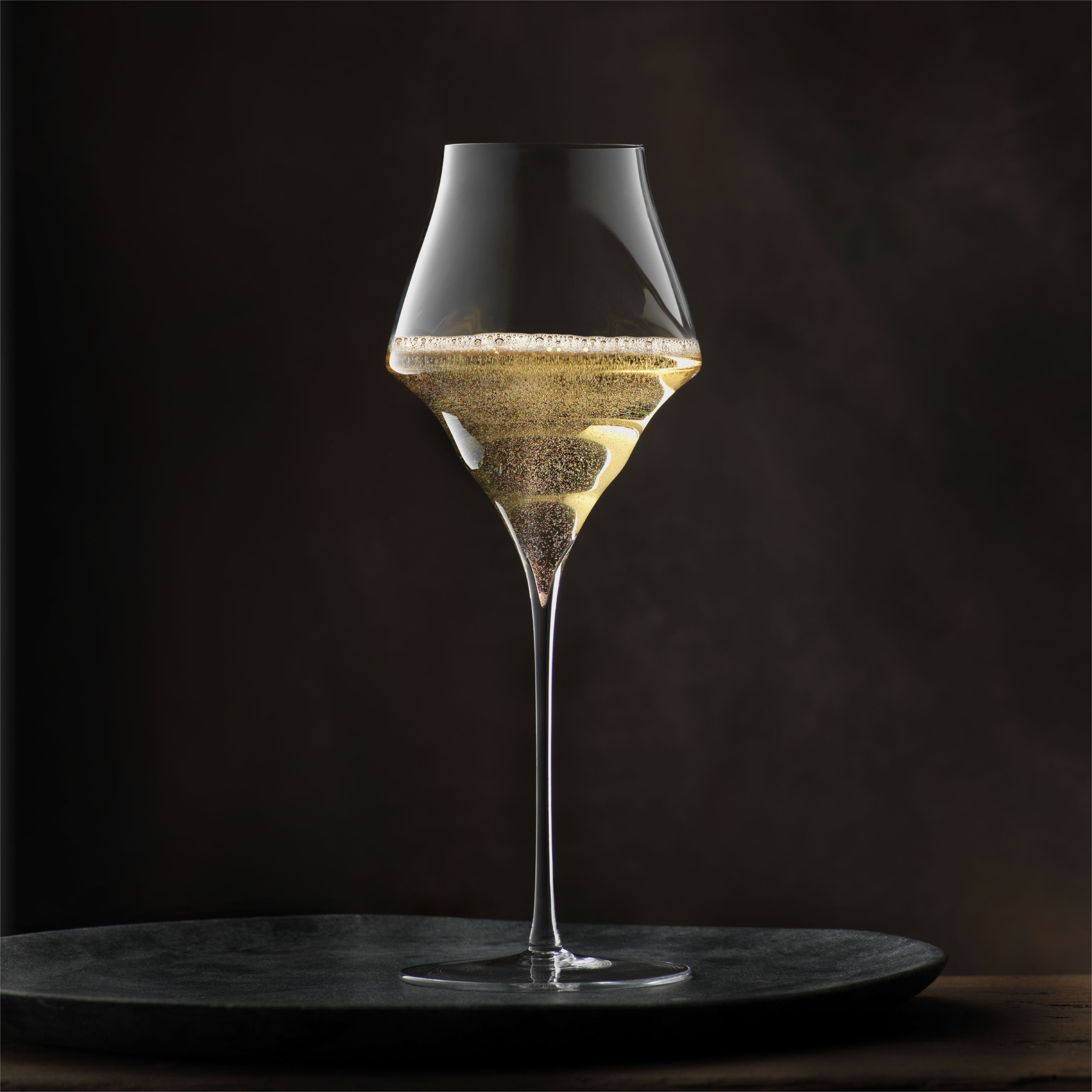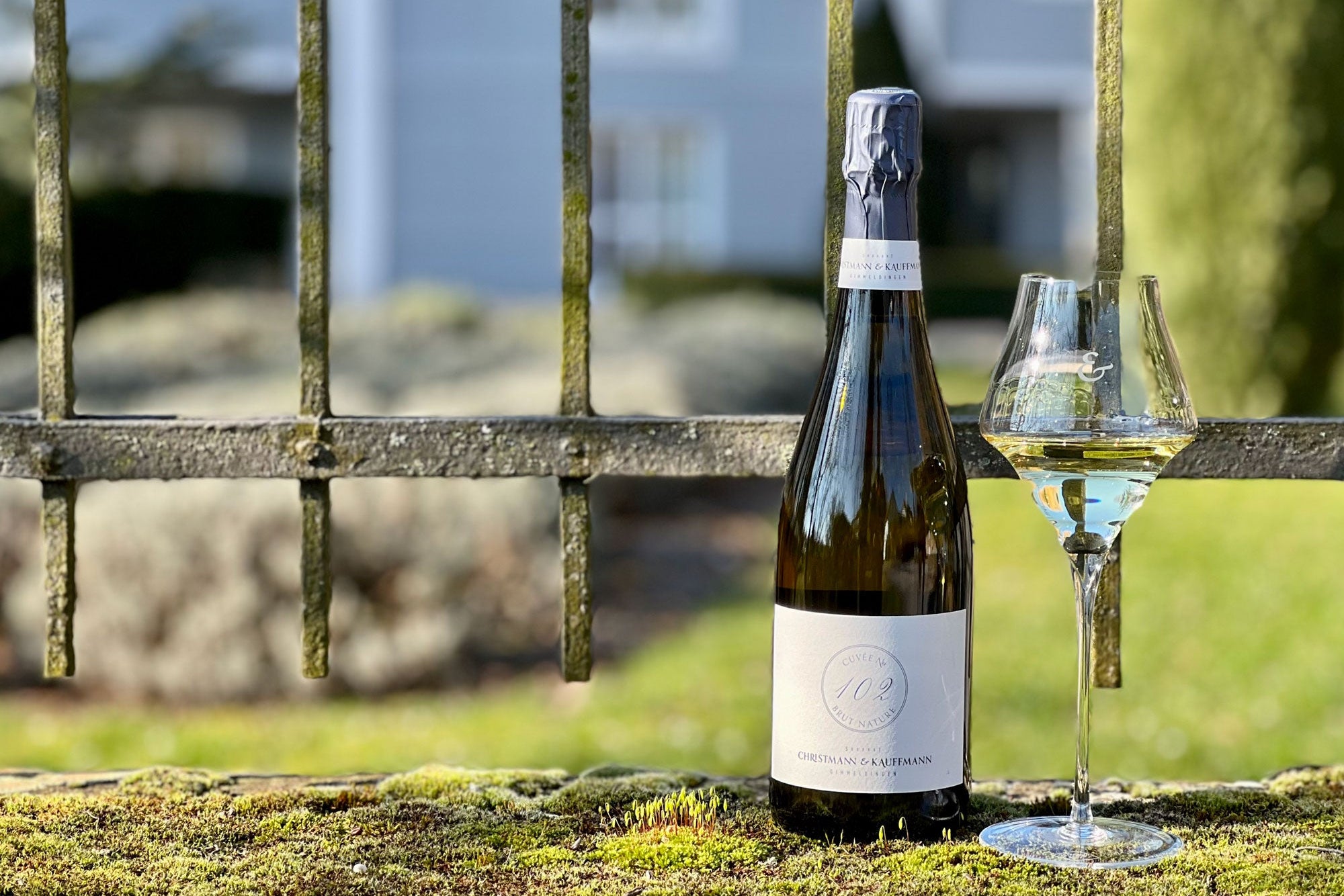My dear Sophie, you are the "next generation" in your family winery and are causing an international sensation with the sparkling wine estate "Christmann & Kauffmann.” Tell us something about yourself that we may not have read yet....
After graduating from high school, I studied in Geisenheim and had internships at the wineries Schäfer-Fröhlich on the Nahe and Bürklin-Wolf in the Palatinate region. In addition I was also in Bordeaux. In 2016, I completed my studies at Geisenheim College and decided to add a master’s degree in Agricultural Economics at the Humboldt University in Berlin.
As the oldest of four children, I joined my family's winery with the 2017 vintage. It was always clear to me that I wanted to take on responsibility in the winery. After all, I grew up in the world of wine and enjoyment.
When you joined the family winery, you dedicated yourself to Burgundy grape varieties. Why?
As I was relatively young when I joined the winery, it was clear that I would be working together with my father for a long time. It was important to both of us that I build up something in my own right from the start that would express my own signature. Insofar as my father always had a clear focus on Riesling, Pinot was traditionally seen as a portfolio addition with us in the winery. He encouraged me to completely rebuild the Pinot Noir system to my liking. Starting with the 2017 harvest, I left no stone unturned. A year earlier, I had worked with Julian Huber during the harvest and learned what matters in Pinot Noir. I am very grateful to him for that. We now make 30 percent Pinot Noir in the winery.
How was the idea for Christmann & Kauffmann born?
Between us, we never planned to start our own sparkling wine estate. The starting point was a conversation with our neighbors, the owners of the Mugler winery. They had no successor to take over the business and were looking for a tenant for their 12 hectares of vineyards. These are truly premium winegrowing locations. At that time, my father and I were already in agreement that we did not want to let our winery grow any further. Nonetheless, it was also clear to us that we could not simply say "no" to these vineyards.
That's how Mathieu Kauffmann came into the picture. He was still working for another winery in the Palatinate at the time. For his sparkling wine portfolio, we offered him biodynamic grapes from the "new" vineyards as an acquisition. He found this super, and we came to an agreement. Mathieu left the company shortly thereafter, but the land had already been leased. We put our heads together and decided to start our own sparkling wine estate together. With Mathieu, we developed a convincing concept which we have since implemented. In September 2019, just a few days after the first idea came up, we harvested the first four hectares of grapes for the sparkling wine base. The new winery did not have its own cellar at that time, so we only harvested as much as would fit into our own winery's cellar. That's why the quantities of our first vintage are so small.
With Mathieu Kauffmann, you have one of the best sparkling wine producers in the world on board. What are your plans for the coming years?
We quickly realized that it was a huge opportunity for us to plan a sparkling wine estate taking a “greenfield approach.” With Mathieu and my father, we have two very experienced heads on board who knew from the start what they wanted and what they didn't want.
The most important premise: the sparkling wine estate should be large enough to build up a perfect infrastructure and small enough to be able to work on an artisanal and authentic basis. From the start, the focus was on artisanal, biodynamic and origin-based sparkling wine on a par with the world's greatest wines.
We are terroir people. Since we have prime plots, we focus primarily on single-vineyard sparkling wines - half of which are made from Riesling grapes and the other half from Burgundy grapes. All are cultivated biodynamically, of course. For our sparkling wines, we rely exclusively on Brut Nature - as in our view, a perfect sparkling wine needs no added sugar.
We are currently planning seven single vineyard sparkling wines and two cuvées as an introduction to the range with a somewhat shorter yeast storage. The 100 number range of sparkling wines consist of Riesling, while the 200 number ranges represent the Pinots. The complete portfolio will be on the market from 2028/29.
Could you describe your sparkling wine philosophy to us?
In the production of sparkling wine, you can lose a lot more quality along the way from vineyard to cellar than you can in wine production. Mathieu has hammered that into us from the beginning. Our processing procedure is therefore designed to be as gentle as possible. We harvest all the grapes by hand and have bought extra small crates that hold only 8 kilograms of grapes. After harvest, the grapes are brought to the winery and processed as quickly as possible. No joke: in the beginning, Mathieu was always there with a stopwatch to optimize the loading of the press. The moment the grapes fall into the press, they burst open a bit and the first bitter substances are released from the skins. Here minutes decide the quality of the later sparkling wine. We have bought our own extremely gentle presses for the sparkling wine.
In the meantime, we have optimized the process with Mathieu so that we process the grapes in the most favorable way. That is our ambition.
In the cellar, the wine must is not pre-clarified. It goes directly into the fermentation container, currently 90 percent wood. The juice ferments spontaneously, is not cooled and lies untouched on the full lees until spring. We intervene as little as possible here. Before the cuvées are disgorged, they lie on the yeast for 28-36 months. For the single-vineyard wines, it is four to eight years. Disgorgement takes place half a year before release.
How should a sparkling wine from your house taste and why?
Basically, our sparkling wines show a lot of spiciness and saltiness. We focus on sparkling wines with a lot of extract and a good structure. They are fine, elegant and tend to have less alcohol.
The Rieslings are a bit leaner, more acidic and a bit wilder than the Burgundies. The Pinot sparkling wines are more classic with a wonderful finish. They exude serenity and calm. After all, that's what Burgundy varieties bring to sparkling wine.
Mathieu is a big Riesling fan and has proven to us that we can create wonderful sparkling wines with this grape variety. The enthusiasm for the Rieslings was huge after the first tastings!
What characteristics does a glass need to have in to get the most out of a sparkling wine?
Essentially, it is important to us that there is a similar quality philosophy behind the glass as there is behind our sparkling wine. It's about craftsmanship at the very highest level. A glass must aspire to provide the best possible stage for a sparkling wine.
How did you come across Josephinenhütte?
The first time I saw a prototype was at a wine tasting by Joachim Christ - one of the co-founders of Josephinenhütte. After that, we kept coming across the glasses at wine tastings, in top restaurants or at dear colleagues' homes. It was clear to us that the glasses belonged on the short list of those we would like to try out for our sparkling wines.
What do you particularly like about the glasses?
We tried all the top sparkling wine glasses on the market and ultimately the sparkling wine glass from Josephinenhütte convinced us in terms of quality. The unique form ensures that the sparkling wine receives enough air and is perfectly presented. In addition, the very distinct and bold look of the glass corresponds very well to the positioning of our sparkling wine.
Speaking of positioning: rather in the background of Christmann & Kauffmann is your partner Achim Berg - a prominent player from the fashion world. The sales launch and the strict allocation were strongly reminiscent of a classic fashion or sneaker drop.Did you draw inspiration from the fashion world for your marketing?
Achim Berg is a longtime friend of the family. He is a senior partner at McKinsey and is globally responsible for the fashion and luxury division. He was keen to invest in the wine industry. When the idea of our own sparkling wine estate came up, we asked him whether he was interested in joining us. He naturally knows a lot about the positioning of high-quality goods - that helped us a lot in the start-up phase. He continues to support us in creating a very consistent corporate identity. Thanks to his support, we have been able to stringently develop the sparkling wine estate and position it on the market.
How satisfied were you with the launch? What has the feedback been like from retailers, sommeliers, and end consumers?
Naturally we hoped it would be well received. But it has gone even better than we imagined. Before the launch of a new project, there is always a bit of lingering uncertainty. Then last summer it became real. People had our sparkling wine in their glasses. That was a great feeling.
It's nice to see that Riesling and Burgundy stand so well side by side. The higher demand for Riesling actually surprised us. The excellent reviews from the critics also exceeded our expectations. This year, slightly larger quantities will be coming to market. We are looking forward to it!
And now the most important question: How does one get your sparkling wine?
Demand currently exceeds availability. We have created a reservation form on the website. Interested parties can use this form to register in our customer database. We will then inform them about the next release via a newsletter. Then they can let us know what they want and make a reservation. As soon as we have an overview of the demand, we will allocate the quantities.





